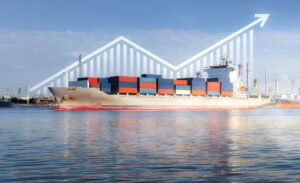In the dynamic landscape of global trade and maritime transport, shipping companies face a myriad of challenges, one of the most pressing of which is the threat of attacks in the Red Sea region.
As a vital artery of international trade, the Red Sea is not only a strategic waterway but also a hotspot of geopolitical tensions and security risks.
Red Sea Shipping Companies: Navigating a Challenging Landscape
Shipping companies navigating the waters of the Red Sea face a complex set of challenges caused by various factors, including piracy, armed conflict and geopolitical rivalries.
These challenges not only pose immediate risks to ship safety and crew security, but also have broader implications for global supply chains and economic stability.
In this professional overview, we will delve into the multi-faceted challenges facing Red Sea shipping companies, examining the impact of attacks on their operations, safety protocols, and strategic decision-making processes. From navigating through high-risk areas to implementing robust security measures, shipping companies must strike a delicate balance between efficiency, safety and risk mitigation in this volatile maritime environment.
Join us as we explore the complexities of managing shipping operations amid the challenges posed by attacks in the Red Sea, and reveal the strategies and best practices TEU industry leaders use to protect their assets, ensure trade continuity, and support maritime security.
Red Sea problems and ship delays
Some of the key challenges and issues facing the Red Sea, especially in relation to ship delays.

The following are the most important problems facing the Red Sea:
- Congestion: The Red Sea is a vital sea route linking Europe, Asia and Africa, which leads to a high volume of ship traffic sailing through its narrow straits and channels. This congestion can lead to delays as ships wait for clearance to pass through congested waterways.
- Geopolitical tensions: The Red Sea region is characterized by geopolitical tensions and conflicts, including piracy, territorial disputes, and civil unrest in countries bordering the sea. These tensions can disrupt maritime traffic, leading to delays and uncertainties for shipping companies.
- Security Concerns: Security threats such as piracy, armed robbery, and terrorism pose risks to ships crossing the Red Sea. Shipping companies may change routes or require escorts, resulting in delays in ship schedules.
- Environmental factors: The Red Sea is exposed to bad climatic conditions such as strong winds, high waves, and sand storms, especially in certain seasons. These environmental factors can affect ship navigation and operations, causing delays in ship movements.
- Infrastructure constraints: Limited port infrastructure, aging facilities, and inadequate navigational aids at some ports along the Red Sea coast can contribute to delays in ship docking, loading and unloading operations, and clearance procedures.
- Suez Canal transit delays: Ships passing through the Suez Canal, which connects the Red Sea to the Mediterranean, may experience delays due to congestion at canal entry points, waiting times to transit, or maintenance activities.
Addressing these challenges requires cooperation among stakeholders, including governments, port authorities, shipping companies and international organizations, as efforts to enhance maritime security, invest in port infrastructure, improve navigational safety, and mitigate geopolitical risks are essential to reduce delays and ensure smooth maritime operations in the Red Sea region.
How did the Red Sea tensions affect the prices of shipping companies?
Tensions in the Red Sea have had major impacts on shipping companies and their pricing dynamics.

Here’s how these tensions affect shipping rates:
- Risk premium: Increasing security risks, including piracy, armed conflict and geopolitical tensions, have prompted shipping companies to factor in a risk premium when calculating freight rates. This additional cost reflects increased insurance premiums, security measures, and potential disruptions associated with moving through high-risk areas.
- Route changes: Shipping companies may choose to change their routes to avoid conflict zones or increased security risks in the Red Sea region. However, rerouting can result in longer transit times, increased fuel consumption, and higher operating costs, which may be passed on to customers. Through higher shipping rates.
- Insurance costs: Escalating security risks in the Red Sea could lead to higher insurance premiums for ships operating in the region. Shipping companies may need to adjust their rates to cover the increased insurance costs associated with navigating high-risk waters.
- Supply and demand dynamics: Uncertainty and disruptions caused by tensions in the Red Sea can affect supply and demand dynamics in the shipping industry. For example, if shipping capacity is constrained due to security concerns, while demand remains constant or increases, prices may rise. Shipping, with shipping companies taking advantage of the limited availability of ships.
- Market Sentiment: Geopolitical tensions and security risks in the Red Sea can affect market sentiment and investor confidence in the shipping industry. This can lead to fluctuations in stock prices and financing costs for shipping companies, which may ultimately impact their pricing strategies.
Overall, tensions in the Red Sea have led to additional complexities and costs for shipping companies, which may be reflected in higher shipping rates for customers. As geopolitical dynamics evolve and security risks fluctuate, TEU shipping companies are adapting their pricing strategies to overcome the challenges and uncertainties related to operating in this vital maritime region.

